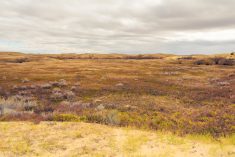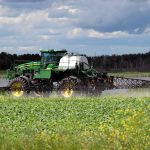New York | Reuters — A U.S. weather forecaster warned on Thursday the El Nino weather pattern that can cause droughts in Asia and heavy rain in the Americas will likely last into next year, longer than previously expected and potentially roiling crops and commodity prices.
The Climate Prediction Center (CPC), an agency of the National Weather Service, pegged the chances of El Nino weather conditions continuing into the Northern Hemisphere’s 2015-16 winter at 85 per cent, becoming the first major forecaster to say the event is highly likely to last into next year.
Read Also

Dryness poised to threaten Saskatchewan crops
Crops in Saskatchewan are developing in opposite directions, the province’s latest crop report said. Growing conditions in the province vary, with some areas receiving enough rain while other locations are experiencing crop stress due to hot, dry conditions.
CPC previously saw a more than 80 per cent chance El Nino would last through 2015.
Government forecasters have been heightening their warning calls for a stronger and longer El Nino. Japan’s weather bureau on Wednesday also said it sees the possibility of El Nino lasting into the winter.
The event, the warming of Pacific sea-surface temperatures, can have devastating consequences for global agriculture, triggering heavy rains and floods in South America and scorching weather in Asia and as far away as east Africa.
In the U.S., El Nino increases precipitation in key agricultural regions and reduces the likelihood of a busy hurricane season from June to November that can disrupt energy operations in the Gulf of Mexico.
“Across the contiguous United States, temperature and precipitation impacts associated with El Nino are expected to remain minimal during the Northern Hemisphere summer and increase into the late fall and winter,” CPC said.
In Canada, El Nino events are often, but not always, associated with warmer-than-usual winters from British Columbia and the Yukon to as far east as central and southern Quebec, and drier-than-normal conditions from the B.C. interior to the Great Lakes basin.
Canada’s Atlantic region and Arctic islands, however, are typically left unaffected in El Nino events.
— Reporting for Reuters by Chris Prentice in New York. Includes files from AGCanada.com Network staff.




















